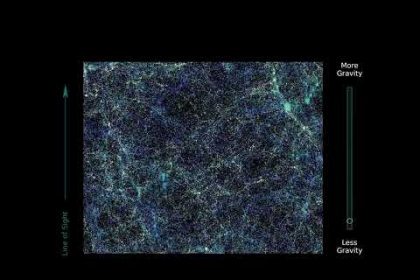Isna/Isfahan A space researcher said: Solar activities can affect the Earth’s seasonal cycles in the long term and lead to climate changes. Historical evidence such as glacial data and past atmospheric events show that some climate changes were also influenced by solar activity.
Solar activities, as one of the natural factors influencing climate changes, can cause changes in seasonal cycles in the long term. However, studies show that the effect of these fluctuations is less compared to the role of greenhouse gases and other human factors in global warming. Changes in solar radiation may contribute to the destruction or strengthening of the ozone layer, but again, the contribution of human activities is greater. At the same time, historical evidence such as glacial data and past atmospheric events show that some climate changes were also influenced by solar activity.
In this regard, regarding the periods of the sun’s activity and its effect on the amount of radiation and weather phenomena, we have had a conversation with Omran Moradi, a space researcher, which you will read in detail below.
How do solar activity periods affect the intensity of solar radiation and how are these changes measured over time?
Solar activity, especially sunspots and solar flares, can significantly affect the intensity of solar radiation. Solar radiation includes a set of different energies and rays, from visible light to ultraviolet rays and other invisible rays that are emitted from the surface of the sun. The increase in solar activity causes the amount of solar radiation to increase and, as a result, the particles of pregnancy that are thrown out from the sun by the solar wind increase. These periods usually occur in 11-year cycles, during which the sun’s activity reaches its peak. These changes are measured and analyzed by scientists through precise astronomical observations and instruments that measure the sun’s radiation and magnetic fields.
How can periodic fluctuations of the sun (such as the 11-year solar cycle) affect Earth’s surface temperature and climate?
Periodic fluctuations of the Sun, especially the 11-year solar cycle, may have limited effects on Earth’s surface temperature and weather conditions. During periods of increased solar activity, the intensity of the sun’s radiation increases, which can cause changes in the Earth’s atmosphere. Different regions of the earth have different sensitivity to changes in solar radiation, but in general, these changes are much less compared to the effects caused by human factors, such as the production of greenhouse gases. Of course, scientific researches in this field are still ongoing in order to be able to clearly define the exact extent of the effect of these fluctuations on the earth’s temperature.
Is there a connection between solar activity and phenomena such as electrical storms and drought?
Some researches have shown connections between solar activities and the occurrence of phenomena such as electrical storms and droughts, but these connections still require more research. Several factors affect the occurrence of phenomena such as drought, and many of them are caused by human factors. Therefore, in the studies of this field, the separation of solar effects from the effects of other factors, such as human parameters, is very complicated, and this makes our data still limited and unstable.
How do solar phenomena such as flares and sunspots change during the periods of the sun’s activity and what is their effect on the earth’s climate system?
Sunspots and solar flares are among the phenomena that occur during periods of increased solar activity due to magnetic disturbances on the surface of the sun. Because the Sun is a huge mass of gas, its different parts rotate at different speeds, and these irregular rotations can disrupt the Sun’s magnetic field lines. This causes the appearance of sunspots and ejection of material from the surface of the sun. When charged particles from these flares and solar winds reach Earth, they can have effects on the Earth’s atmosphere, communication systems, and even weather systems. Although the impact of these phenomena on the Earth’s atmosphere is limited compared to human factors, they may cause limited changes in weather conditions and even climate.
How can changes in solar activity affect the general circulation of the Earth’s atmosphere and weather patterns such as El Nino and La Niña?
Solar activities and its changes can somehow affect the atmospheric patterns and the general circulation of the Earth’s atmosphere. Although solar effects on the intensity of atmospheric patterns are relatively limited, some studies show that solar fluctuations can have minor effects on the intensity and distribution of some atmospheric phenomena. However, more and more detailed studies are needed in this field to be able to separate these effects from other factors and weather fluctuations that play a role in creating these phenomena.
How does the decrease or increase of solar radiation affect the seasonal cycles of the earth and can it cause climate changes in the long term?
Changes in solar radiation in the short term have limited effects on the Earth’s seasonal cycles, but in the long term, such changes can transform the structure of these cycles. However, studies show that among the various factors of climate change, the role of human influence and greenhouse gas emission as the strongest factor dominates these changes. As a result, although solar radiation can help the global warming process, its contribution is less compared to the effects of greenhouse gases. While these phenomena are visible, they require more detailed investigations and long-term research to identify the contribution of the sun to climate change.
How do scientists use climate models to predict the impact of solar activity on climate change?
Solar activities are somewhat predictable, and scientists who focus on solar atmospheric phenomena at space agencies and international consortia monitor these activities. The presence of sunspots in the form of a butterfly diagram, which is a fairly regular cycle, helps scientists to predict changes in these activities. As the solar wind increases, crisis teams also step in and monitor satellite and radio communications, as intense solar activity can cause serious disruptions to these communications. These predictions are accompanied by detailed studies of sunspots and magnetic storms, to consider their possible effects on electrical systems, power plants and international communications.
Can solar oscillations be considered as one of the causes of global warming or are their effects limited compared to other factors?
Solar fluctuations can influence the global warming process to some extent, but their contribution is much more limited compared to human factors and greenhouse gas emissions. In fact, human activities and the greenhouse phenomenon have provided the main platform for global warming and these phenomena have left their effects that make even small solar effects become more intense. For example, the presence of greenhouse gases in cities helps trap the sun’s heat, while in cleaner areas such as deserts, heat escapes more easily from the Earth’s atmosphere. Therefore, the main role in global warming is due to the greenhouse phenomenon created by humans, and solar activities are only marginally effective in this process.
What is the effect of periods of solar activity on the ozone layer and how can changes in solar radiation strengthen or destroy it?
An increase in solar radiation can lead to the intensification of the ozone layer destruction process, especially during periods when solar activity is intense and lasts longer. However, as with other effects, human effects on ozone layer depletion are far greater than those of the sun. In fact, harmful gases and pollutants that come from human industrial activities are the biggest factor in ozone destruction, and the increase in solar radiation can play a role in this destruction as a side factor.
Is there evidence that solar activity has caused major weather events in the past? And how was this evidence gathered?
There is evidence from geological studies and historical data, including glacial and tree-ring data, that solar activity has coincided with some climatic events in the past. But it should be noted that these events have had an impact on human artifacts, such as radio communications and electricity.
For example, the Carrington Event of 1859 was one of the largest geomagnetic storms on record, causing fires in telegraph lines and auroras at latitudes near the equator. Or the 1989 solar storm that caused power outages in Quebec, Canada and disrupted satellite services. Also, in 2003, solar flares caused disruptions to GPS and radio communications, and in 2017, there were widespread disruptions in navigation systems and some companies changed flight routes.
An interview with Maryam Turkzad, ISNA reporter
end of message
RCO NEWS


















